Add Jordan to your list
A road trip along the Desert Highway and the King’s Highway; featuring Amman, the Wadi Rum, the Red Sea, Petra, the Dead Sea, al-Karak and Madaba.
A road trip in Jordan
With the start of the new year, we are bombarded with "Where to Go in 2025" lists*. Amsterdam is on some of them (my city is turning 750 this year), as is Rome (it’s the Jubilee year). Other popular recommendations include the Stockholm Archipelago, Nicaragua, the French Riviera, Bhutan, Osaka, Greenland (which is very popular these days), Uzbekistan, the UK (including Wales and Scotland), Nigeria, and Fiji. It’s good to see some classic destinations still making the lists, like Thailand, Australia, and Laos.
Jordan appears on two of these lists because of the appealing Jordan Trail. But even for those not into hiking, it’s a fantastic destination—you can even do a road trip yourself!
Jordan’s economy could use the boost from tourism. Since the start of the war in Gaza, visitor numbers have declined (sources: Reuters and the Ministry of Tourism and Antiquities). Once again, this is a dramatic drop, similar to 2015/2016 and the pandemic. People remain cautious about the Middle East, but Jordan is a beacon of peace in the region. And there’s so much beauty to experience in this welcoming country.
The lists: New York Times, Condé Nast Traveller, National Geographic, BBC, Lonely Planet, Travel + Leisure, Forbes
The Desert Highway (Amman & the Wadi Rum)
The presence of the Romans here is evident just around the corner from our hostel in Amman. The theatre has such steep steps that the River Plate stadium pales in comparison. Atop a hill lies the Citadel, a collection of remnants from various periods.
Amidst all the pillars, we have lunch at the best falafel place in Amman. The menu consists solely of falafel. It’s very simple: for 1 dinar, you get a falafel sandwich with a drink, and for 3 dinars, a full falafel meal (with extra balls, extra bread, hummus, salad, fries, and a drink).
We see more Roman ruins north of Amman, in an area with views of the Golan Heights and sometimes barely 10 km from the Syrian border. Our driver that day is a Palestinian who talks about the refugees and the camps but is eager to show us his beautiful country. The highlight is the stunning ancient city of Jerash. On the way, the driver insists we try some Jordanian grapes.
During dinner in a beautiful garden, everyone wants to know where we are from and says to us, "Welcome to Jordan." We do feel welcome. The people are incredibly friendly. They want us to tell everyone back home that there is nothing wrong in Jordan and that tourists should visit.
The road trip begins on the Desert Highway (yes, we also think of The Eagles). We head to Wadi Rum, but not before having coffee with cardamom. The young man at the shop-cum-roadside restaurant is so pleased with our custom that he gives us all sweets, as does his friend who stops by.
With a Bedouin, who looks just as you would expect, we drive into Wadi Rum—a red desert with a wonderfully dramatic landscape. After sunset, we have a cup of desert tea and head to the Bedouin camp. As there are few tourists, we are grouped together in the camps. And of course, with us is a Dutch lady who later in the evening makes a legendary remark:
"I met this man. He had a very big instrument. And he let me play with it."
After sunrise (where Wadi Rum resembles what we imagine Mars to look like), we hit the Desert Highway again—this time to Aqaba on the Red Sea. Everywhere we go, we are warmly welcomed: with coffee, falafel, and at lunch, we receive extra mezzes. That same afternoon, we wade into the Red Sea to dive.
Your road trip through Jordan:
Renting a car is convenient. We started our rental in the centre of Amman and dropped it off near the airport.
Jordan’s main roads—the Desert Highway and the King’s Highway—make navigation easy.
This trip can be done in a week or extended for a longer stay.

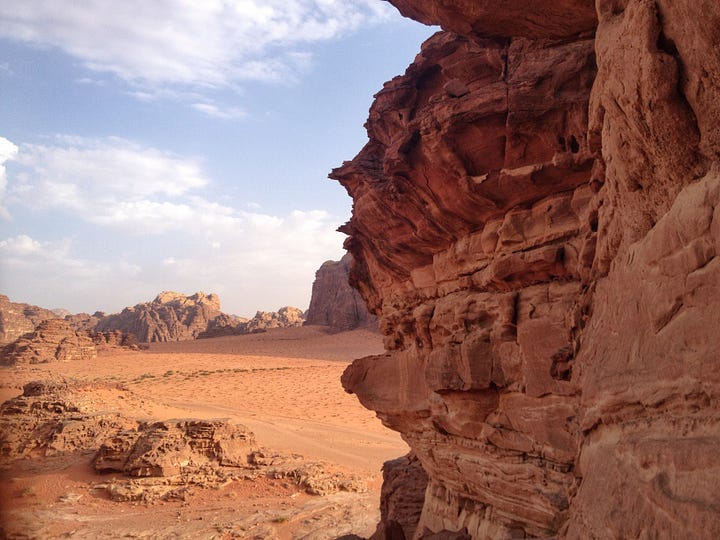
The King’s Highway (Petra & beyond)
Anyone visiting Jordan cannot leave without seeing Petra. And yes, the eighth classical wonder of the world, or one of the current seven wonders, is truly impressive. Walking through the Siq gorge, the first sight of The Treasury is breathtaking (as clichéd as that sounds). But Petra is more than that—the ancient city is vast. And that means a lot of walking. Some people clearly struggle, especially on the 850 steps up to the monastery.
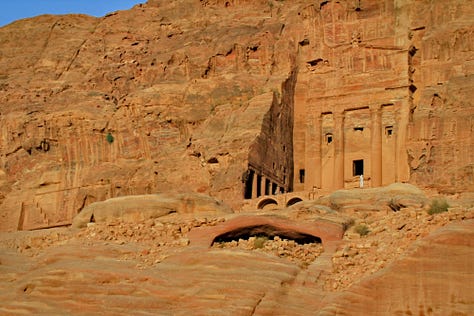
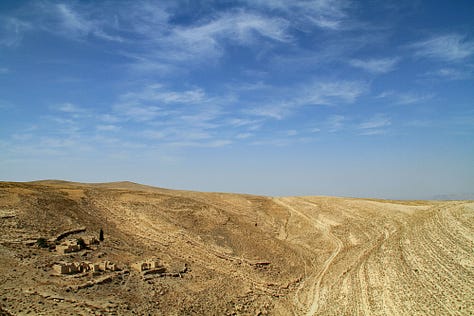

In the evening, a group of Dutch people arrives at our camp—six middle-aged women and two men. Betsie hears the music and immediately wants to dance, and Yvonne eagerly joins in. Betsie bounces up and down a bit, while Yvonne attempts to dance sexily (despite having the build of a discus thrower). The next morning at breakfast, one of the men tells Yvonne she has a healthy appetite, to which she replies:
“I really love eating; it makes me very happy. I especially enjoy healthy food. Do you know what truly makes me happy? Drinking water. That makes me so happy. I think I was dehydrated in a past life.”
Then the daily Tarot cards are handed out, and Saskia has to explain them. Betsie, uninterested in Tarot, goes off to pack her bag.
After another morning in Petra, we drive via the King’s Highway towards the Dead Sea. Along the way, we visit two castles. The last one, Kerak Castle, is technically already closed. But because we are warmly welcomed everywhere, we are simply allowed to go in. Having the castle entirely to ourselves is an incredible experience. It seems not many tourists visit the area, as the guesthouse in al-Karak is opened especially for us that day.
Our final day in Jordan begins with a floating session in the Dead Sea (a very peculiar experience), followed by a drive to Bethany beyond the Jordan—the eastern bank of the river where, according to John 1:28, Jesus was baptised.
The town of Madaba is renowned for its mosaics, the highlight being the map of the Promised Land in the Greek Orthodox Church. The Church of the Apostles is officially closed that day, but once again, we are granted access. And—why not—we are even allowed to walk on the mosaics, of course very carefully.
For your itinerary:
📍 The hotel we stayed at in Amman was the Jordan Tower Hotel, an absolutely great place to stay with very friendly staff.
📍 When in Amman, make sure to visit Hashem for at least their falafel and very tasty hummus.
📍 For Jordanian food in a charming courtyard setting, Sufra in Amman is an excellent choice.
📍 And for diving in Aqaba I can recommend Aqaba International Dive Center
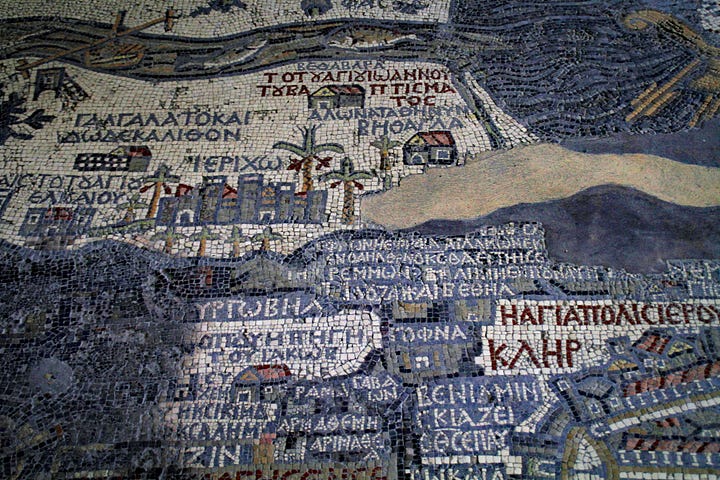
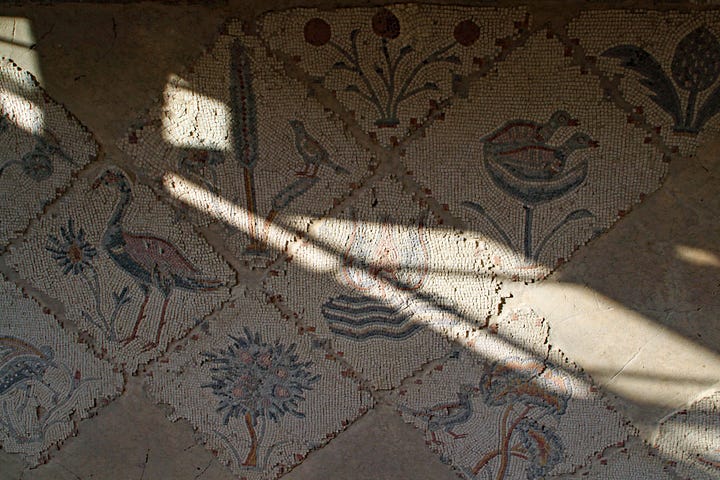
Watch, read, listen & for your agenda
Speaking of the region, last week I saw the impressive documentary No Other Land, which won the audience award at IDFA (International Documentary Festival Amsterdam) and is nominated for an Oscar as well.
The Wadi Rum has been the otherworldly setting for many films, such as Mars in The Martian and Arrakis in the recent Dune movies directed by Denis Villeneuve.
Ticket sales for the International Film Festival Rotterdam (IFFR) have just started! Running from 30 January to 9 February 2025, it showcases films from around the globe.
Into lists? The Guardian offers some great 2025 culture preview lists featuring exhibitions, books, theatre, TV shows, games, movies, and more.
I’d like to hear from you!
Following the travel lists for 2025, I started thinking about overtourism. It seems like a buzzword in the travel industry, but some destinations are genuinely struggling with its effects. So, it’s certainly not a trend like slow travel or similar concepts—it’s a real issue for certain cities and countries.
Does overtourism have anything to do with FOMO (fear of missing out)? I’m curious—have you ever done something while travelling purely because of FOMO, or avoided something because you were too overwhelmed? Personally, I skipped the Taj Mahal 😱 during my trip to India because, after months of travelling, I was completely drained by the crowds. What’s your experience?



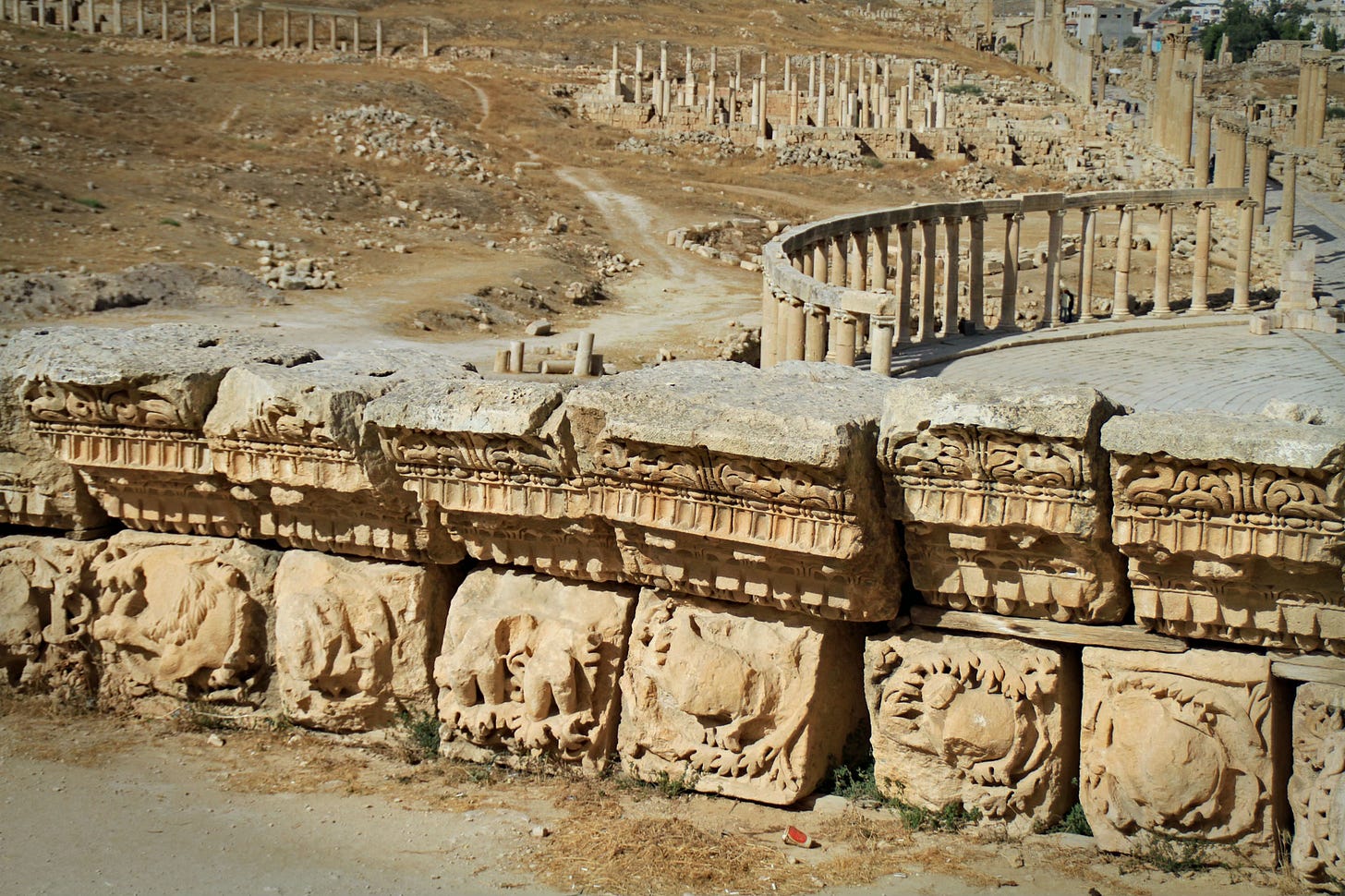
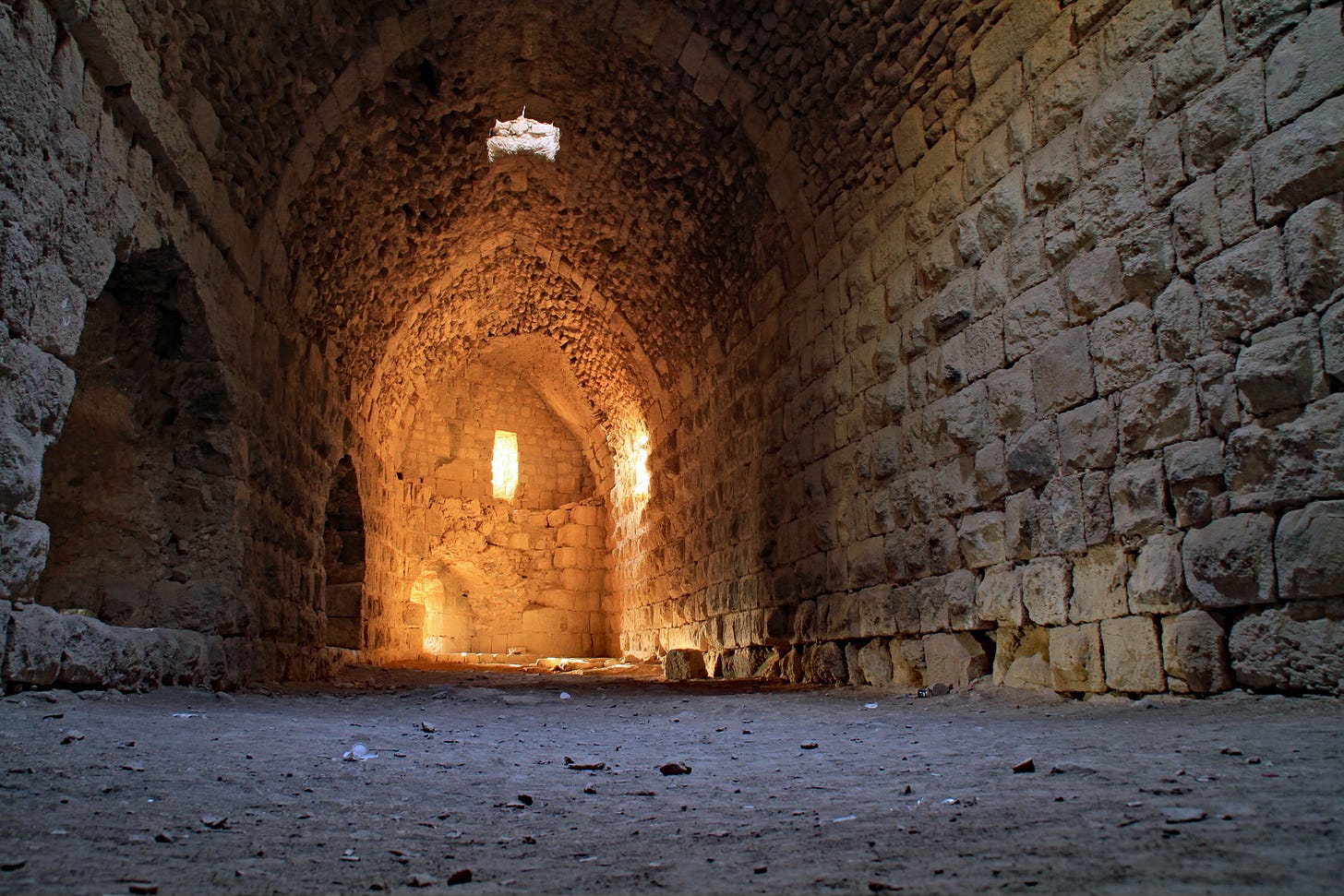

added! thanks for the inspiration.